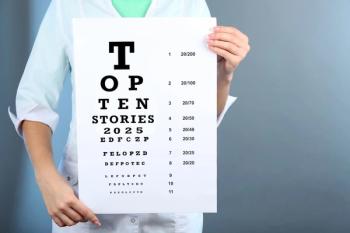
ARVO announces recipients of 2023 Pfizer Ophthalmics Carl Camras Translational Research Award
The intent of the award is to recognize early-career researchers who have exhibited excellence in research, as well as their fundamental scientific discoveries, concepts and novel technologies which have led to, or have the promise of leading to, clinical application.
The Association for Research in Vision and Ophthalmology (ARVO) announced the winners of the 2023 Pfizer Ophthalmics Carl Camras Translational Research Award recently in a press release.
Jessica I. W. Morgan, PhD, and Pete A. Williams, PhD, are the recipients of the award and will be awarded $12,000 each to further their research.
According to ARVO, the intent of the award is to recognize early-career researchers, age 45 and younger, who have exhibited excellence in research, as well as their fundamental scientific discoveries, concepts and novel technologies which have led to, or have the promise of leading to, clinical application.
Morgan, an associate professor of ophthalmology at Scheie Eye Institute, University of Pennsylvania, established an independent lab that specializes in applying high-resolution retinal imaging techniques to study the structure and function of the retina at the cellular level, both in health and disease. According to the ARVO release, Morgan’s current research is fully devoted to using high-resolution imaging and adaptive optics scanning light ophthalmoscopy to examine the structure and function of the human visual system at the cellular level noninvasively, and to translating these imaging techniques to investigate pathogenesis and treatment of retinal disease.
"I am truly honored to receive the Pfizer Ophthalmics Carl Camras Translational Research Award," said Morgan in the ARVO release. "This award not only acknowledges my efforts in translating retinal imaging technology to study blinding diseases and their treatments, but also serves as a reminder of how much work my team and I still have left to do. I am so thankful for everyone who has guided me along my career and to all my collaborators who have contributed to our research. I look forward to continuing our research to use retinal imaging to understand vision with the goal of saving sight."
Williams, a visual neuroscientist within St Erik Eye Hospital and the Karolinska Institutet, aims to better human health through translational neuroscience, focusing primarily on neuronal bioenergetics.
“Receiving this award signifies the importance of translational research into neuroprotective strategies for glaucoma and gives hope that the community can develop clinically-translatable neuroprotective therapies in the future,” Williams said in the ARVO release. “Receiving this award also acknowledges, not only the world class basic and clinical eye research we can perform in Sweden, but also the strengths of building multi-national collaborations. It also demonstrates the importance and utility of animal and cell models of glaucoma that, when correctly used, can lead to clinically translatable therapies.”
Newsletter
Don’t miss out—get Ophthalmology Times updates on the latest clinical advancements and expert interviews, straight to your inbox.





